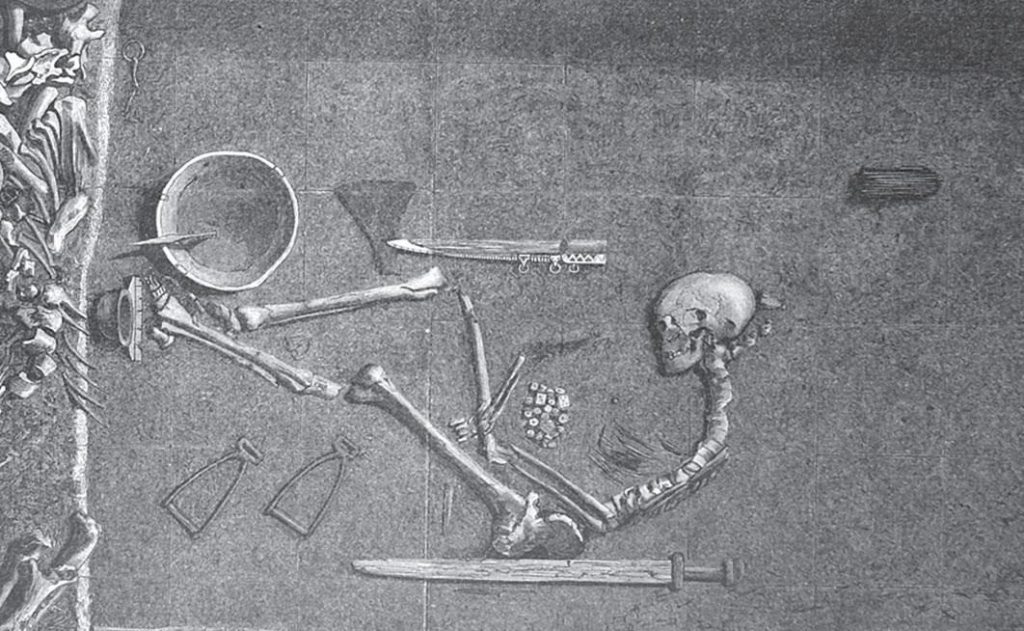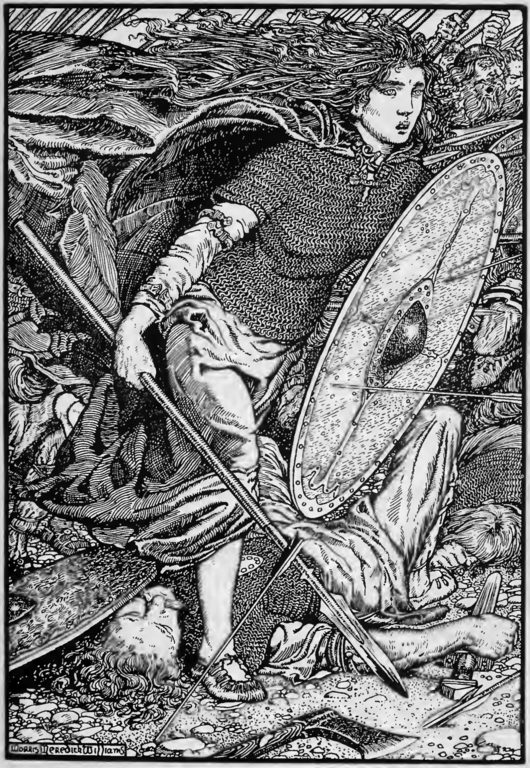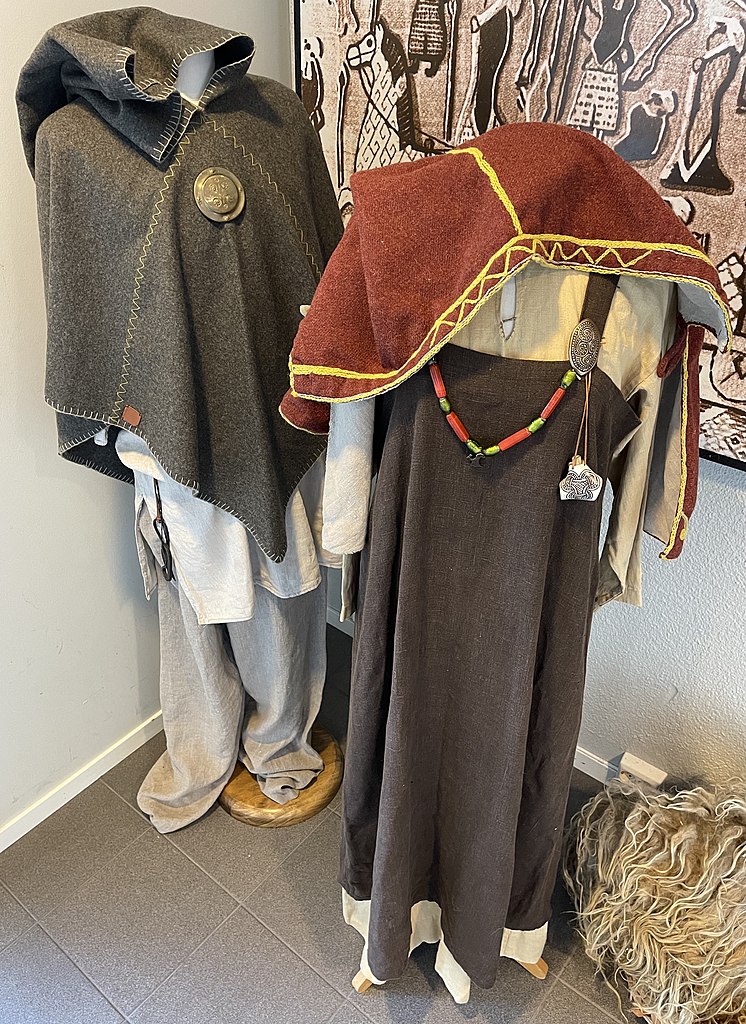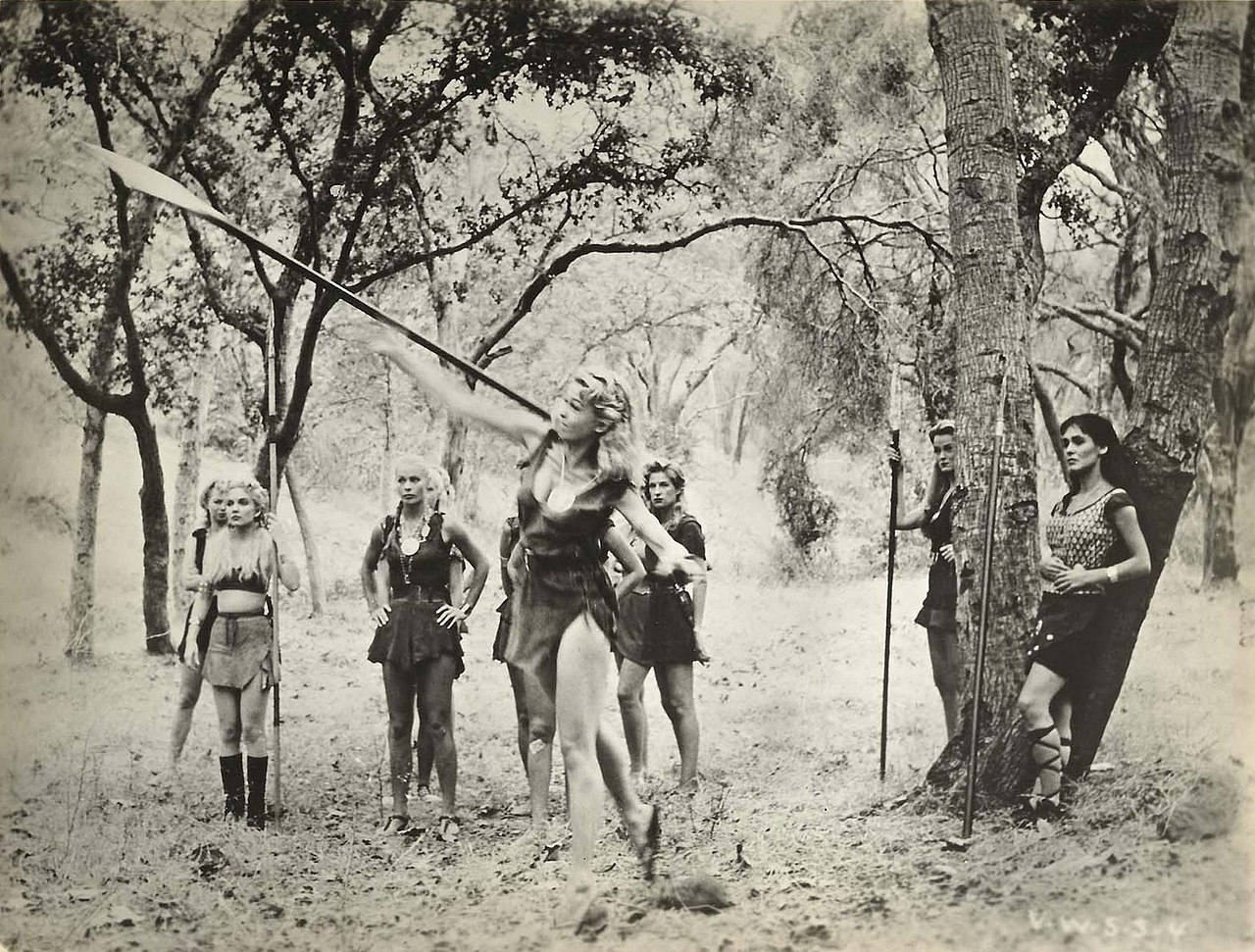The graves of Viking women tell a rich story of status, power, wealth, adventure, and more freedom than their European counterparts. A level of gender equality is obvious in the everyday life of the ancient Viking woman. But, the evidence suggests that Viking women still lived in a patriarchal society as housewives in a mainly domestic role.
Were Viking Women Warriors?
Although popular TV shows like Vikings have tantalized and reinforced the story of shield maidens, experts have long since doubted the existence of the female Viking warrior.
But, the famous Icelandic romantic sagas of the middle ages relay stories of an earlier Viking age. They say women were strong warriors who could take revenge or stand up to or with their husbands in battle when needed.
However, the validity of these sagas is in question as they were written long after the events by people who were not present.
So what do the female graves say?
Interestingly, a 2017 DNA study of a Viking grave (originally excavated in Birka, Norway, in 1889) concluded that this grave housed a high-ranking warrior woman due to its grave goods. Items found in the grave include a chess board (evidence of strategic thinking and a typical warrior game).
Despite this, many still believe there is not enough evidence to say if these Scandinavian women were warriors. Nevertheless, many prefer to think of the idea of strong warrior women.

The Legends of Female Warriors in Viking Age society
The idea of shield maidens remains mainly a myth. But, there is some mention of the role of women in Viking warfare.
For example, women are recorded fighting with Varangian Vikings during a battle against the Bulgarians in AD 971 by the Byzantine-era historian Johannes Skylitzes.
Viking women were also described as belonging to communities of “shield-maidens” dressed like men. They devoted themselves to learning swordplay and other warlike skills by the 12th-century Danish historian Saxo Grammaticus.
He also noted that during the mid-eight century, about 300 of these shield maidens fought in the Battle of Brávellir.
Most famously, Saxo wrote about the legendary Lagertha, the shield-maiden who fought alongside the even more famous Viking warrior Ragnar Lothbrok in a battle against the Swedes. Ragnar was so enamored by her courage that he did not stop until he won her hand in marriage.

Did Viking Women Travel Too?
Technically, Viking women couldn’t be given the term Viking as the old Norse word “vikingar” only applied to men, a fact noted by Judith Jesch, author of ‘Women in the Viking Age’ (1991).
Scholars use this word to refer to the Scandivanian men who embarked from northern Europe on their iconic Viking ships, sailing to new and unfamiliar locations such as North America, North Atlantic Islands, Russia, Europe, and Britain between AD 800-1100.
An interesting 2014 study using mitochondrial DNA evidence suggests that Norse women joined Viking men during Viking Age migrations to Iceland, the Shetlands, the Orkney Islands, and England. This study suggests that Norse women were a vital part of Viking migration and the population of new settlements.
What were their Jobs?
Although the lives of Viking women were quite different from European women, housewives and mothers were their main job titles.
Archaeological digs suggest that men were the hunters, fighters, traders, and farmers, and a woman’s primary role was looking after the home and children, reflecting traditional gender roles.
For example, women were buried with household items like jewelry and needlework, while men were buried with weapons and tools.
Even though the ‘ruler’ of the house was the husband or father, women were still instrumental in managing the home and their husbands. Their role may have been domestic, but they had full authority. Even when the husband was absent, she would solely manage the farm and traders.
In the event of the husband’s death, the wife would take on his role permanently. This meant her role would change from wife and mother to the owner and lord of the family farm and head of any trading business.
The Oseberg Burial
Again, the dead tell us that Viking women enjoyed status, power, and riches, sometimes usurping or beating that of their husbands. Many women in Viking Scandinavia have been found buried with rings of keys, symbolizing strength and status in their role as household managers.
One of these graves reflects the high status some Scandanavian women could reach, with the Oseberg’ queen’ having the grandest burial found for that time. She was buried in a giant Viking ship with grave goods of many rich and intricate objects, usually carved from wood.
Other expensive things included:
- Chests
- Buckets
- A chair
- A carriage
- Sledges
- Oil lamps
- Beds with fine feather-down bedding
- Tapestries of intricate patterns and figures
- Large quantities of the ordinary household, like buckets, knives, cooking pots, and frying pans, indicate a woman’s domestic role.
What was Life like for Women in the Viking Age: Key Facts
Some of the things that Viking women could do, unlike women in Europe at the time, included:
- Owning property
- Serving as clergy
- Running a business
- Becoming traders after their husbands died.
- Having full authority of the home and land, even when the husband is absent, and adopting the role if the husband dies.
Although Viking women were married in an arranged marriage between the ages of 12 and 15, they usually had a say in the arrangement. They could also get divorced and reclaim their dowries if their marriage ended, with their marriage contract even stating how the family property could be divided in the event of divorce.
How did Vikings Treat their Wives?
With the freedoms, power, wealth, and apparent status of Viking women and the rights mentioned above, you could assume that Vikings treated their wives well. Because Christian marriage laws did not bind Vikings as Pagans, they could have as many wives as they chose, with only their financial status as an opposing factor.
It is unclear how the Viking women felt about this, but it is believed that the first wife had authority and reign over the other wives.
Because Viking weddings were seen more as a business contract between two families, wives could end this contract via divorce for many reasons.
These reasons could include:
- If he struck her three times.
- If he settled in another location.
- If he would not consummate their marriage for three years.
This essence of divorce suggests that the Vikings’ wives were given more freedom than other women in the middle ages.
What did Viking Women Wear?
As you would expect in the cold Norwegian, Scandinavia, and Icelandic winters, Viking women predominantly dressed for practicality and comfort. Experts believe Viking women’s clothing included a thin-linen underdress from shoulder to ankle for extra warmth.

Extra warmth would likely have been obtained from adding a wool dress of a shorter length on top, with both layers fastened together at the straps by iron or bronze brooches.
Experts believe their textiles were colorful and bright, unlike the grey and often gloomy lands they inhabited.

